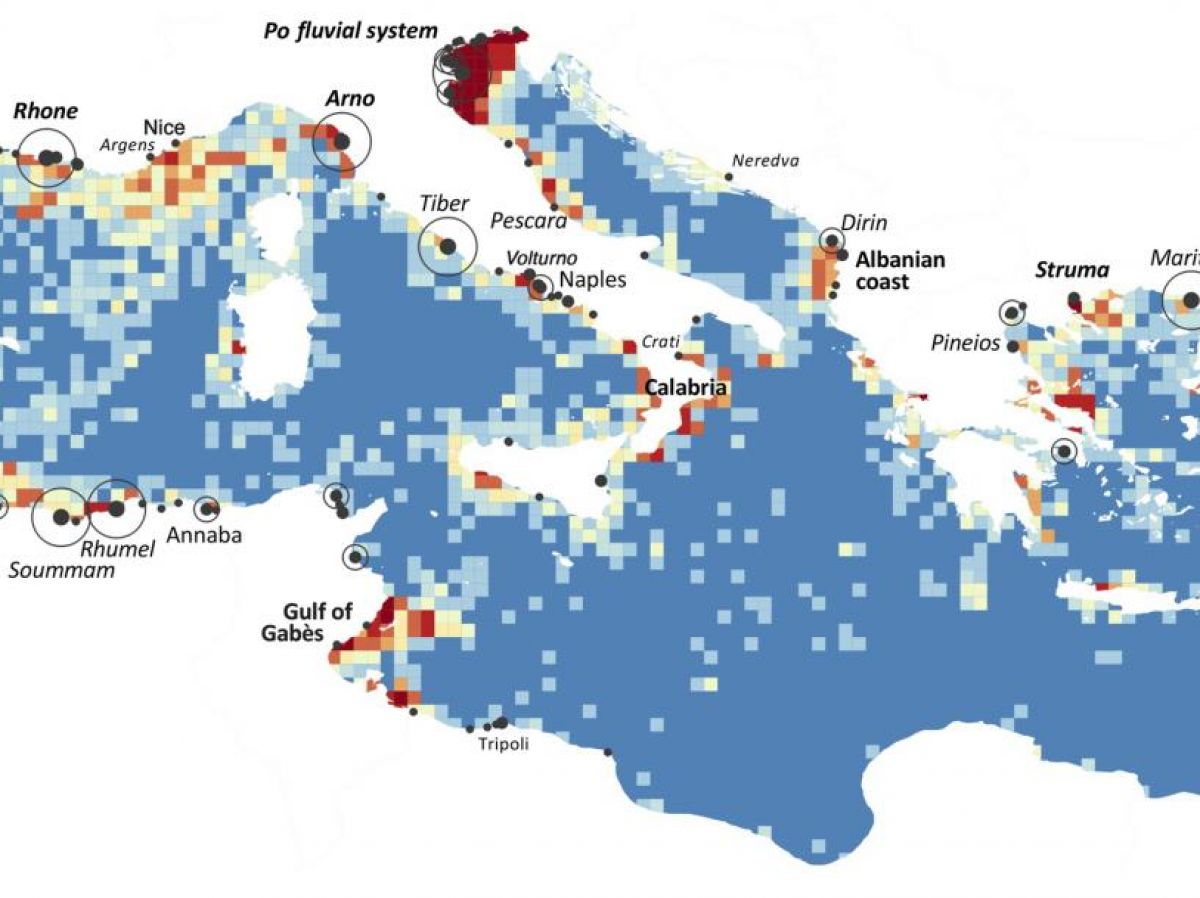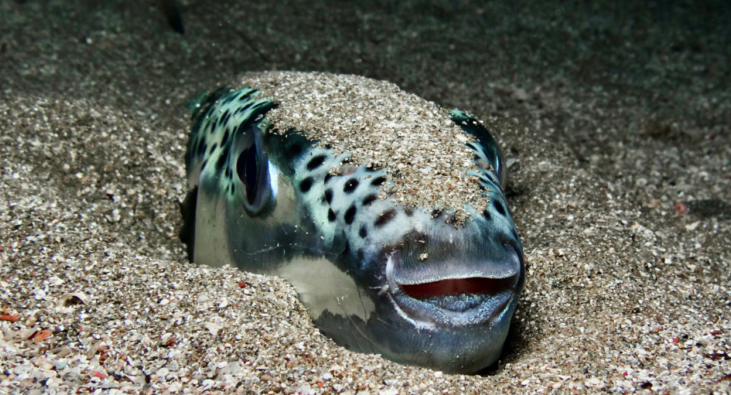More than 14,000 strips of plastic waste over 10 meters long and averaging 1 km in length were mapped using the Sentinel-2 observation satellite of the European Copernicus program.

Density of marine waste windrows (MWW) in the Mediterranean Sea. The most populated river basins and the largest coastal cities are indicated. The size of the black circles is related to the magnitude of marine litter input estimates based on theoretical models.
An inventory of plastic clusters floating in the Mediterranean Sea has been carried out with the Sentinel-2 observation satellite of the European Copernicus program, in a study led by Spanish researchers.
After six years of observing the infrared radiation emitted specifically by plastic debris, which is predominantly present, more than 14,000 plastic debris bands longer than 10 meters have been detected, with an average length of 1 km, most often parallel to the coast.
In about twenty cases, these accumulations caused by converging currents exceeded ten kilometers in length.
Maximum density at 10 km from the coast
The distribution of these plastic bands or windrows was very heterogeneous at sea, with a maximum density about 10 km from the coast and before the offshore currents.
Their distribution in the Mediterranean was also varied, with a strong presence of windrows in the western basin, particularly near the Strait of Gibraltar, between the Côte d’Azur and Corsica, in the Gulf of Gabès, and especially in the northern tip of the Adriatic Sea.

A windrow of trash observed in a Sentinel-2 L1c true-color image (October 31, 2018, off the Piave River, Italy). Pixels with plastic-like spectral profiles are colored red. Credit: Cózar et al (2024)
Better management of plastic pollution
This distribution reflects the effect of more frequent rainfall in the western Mediterranean, which washes debris from riverbanks, as well as the influence of winds such as the mistral.
In winter, the formation of windrows decreases, and they even disappear completely with the wind in the northern Adriatic.
Researchers note that these debris windrows most often come from nearby coasts and travel very little. This initial experimental survey can help better manage plastic pollution and understand ocean currents in the Mediterranean. It opens the possibility for even more precise measurements at the meter scale, which will allow the location of shipwrecks, oil spills, and aid in sea rescues.
Source: Sciences et avenir




